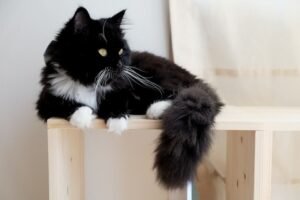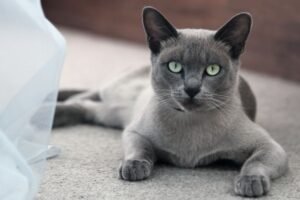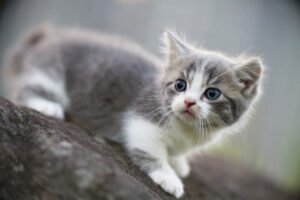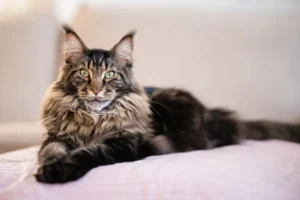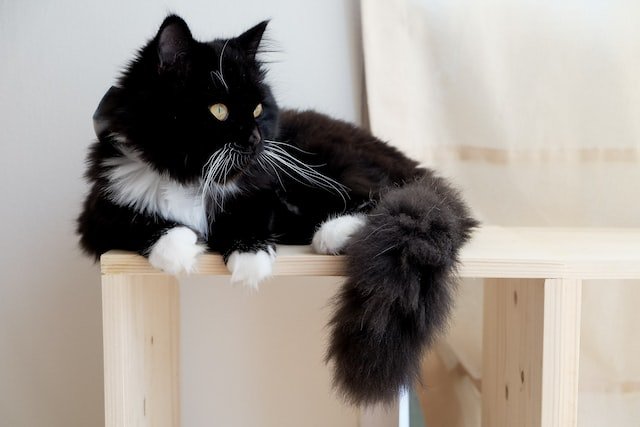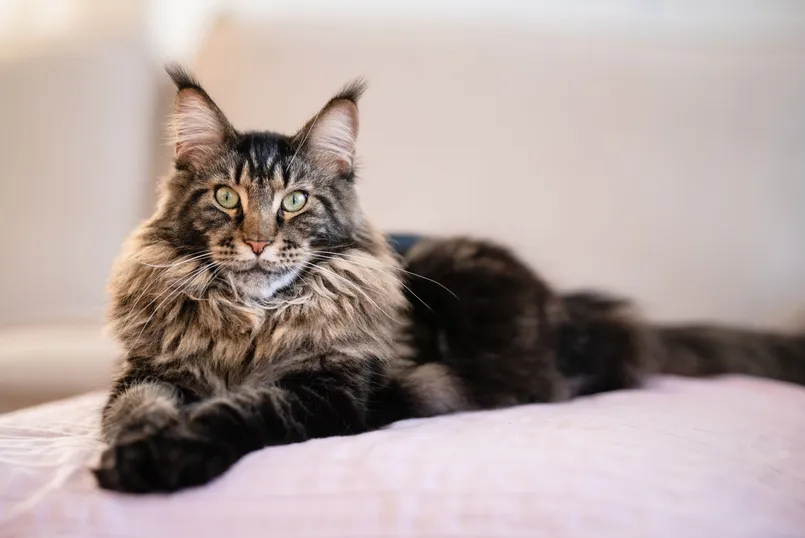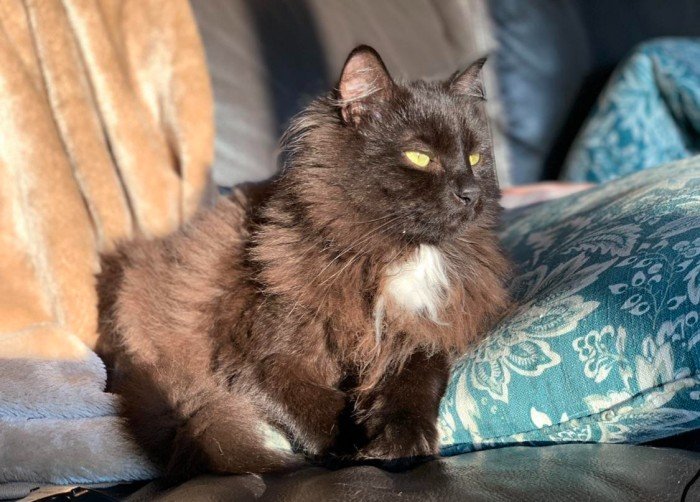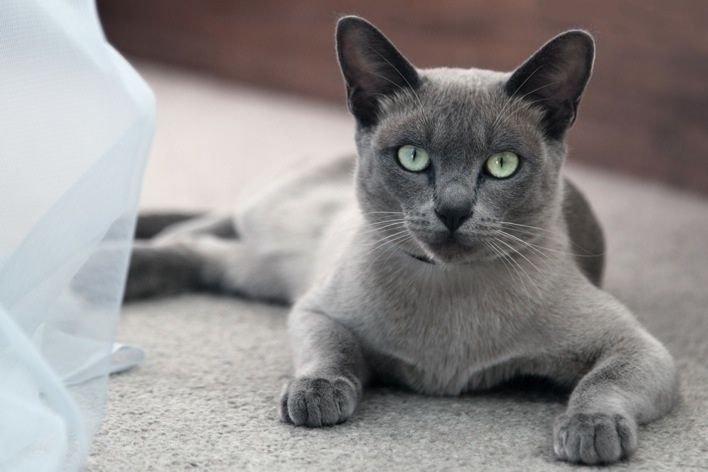
Stay Connected with Us!
Join our communities for the latest updates, tips and earning opportunities:
Mink Cat History and Origin
Mink cats were first developed in the early 1990s in the United States. The breed was created by breeding Burmese cats with Siamese cats, resulting in cats with a unique coat color that is different from their parent breeds. The main objective of breeding ,Burmese and Siamese cats together was to create a cat that had the best of both worlds. Breeders wanted a cat with the affectionate and social personality of the Burmese, combined with the stunning appearance and intelligence of the Siamese. What they ended up with was a breed of cats with unique coat colors and patterns that had never been seen before.
Table of Contents
ToggleAppearance
- Mink cats are known for their striking coat, which is short, silky, and shiny. The coat has a distinct sheen that sets them apart from other cats. Mink cats have short, plush coat that is dense and silky to the touch. The fur is glossy and has a satin-like sheen that reflects light beautifully.
The coat color of mink cats is typically a warm, rich shade, with the darkest points being on their paws, tail, and ears. The fur on the body is a lighter shade, and the coat gradually gets darker towards the extremities. The points are not as dark as those found in traditional Siamese cats, but they are darker than in Burmese cats.
Mink cats have a unique coat pattern that is different from both Burmese and Siamese cats. The pattern is called “modified pointed,” which means that the points on the cat’s body are more subtle than in traditional pointed breeds. The coat has a more gradual transition between lighter and darker colors, which gives it a more natural look.
Mink cats have a muscular, athletic build, with a medium to large size. They have a wedge-shaped heads, with large, almond-shaped eyes that are typically a deep blue-green color. Their ears are medium-sized, pointed, and set wide apart.
Cat Looking Up Personality and Temperament
Mink cats are known for their affectionate and social nature. They love attention and will often follow their owners around the house, looking for cuddles and playtime. They are also intelligent and curious, making them great companions for families and individuals who are looking for a friendly and interactive pet.
Mink cats are very vocal, and they love to talk to their owners. They are known for their unique vocalizations, which are a combination of the meowing of Siamese cats and the purring of Burmese cats. They are very communicative and will let you know when they want attention or food.
Mink cats are very playful and active, and they love to play with toys and climb on furniture. They are also very loyal and will form strong bonds with their owners. They are great with children and other pets and will often seek out the company of their family members.
Lifespan
12-15 years is the average lifespan of Mink Cats, which is similar to the average lifespan of most domestic cats. However, some mink cats may live longer or shorter depending on their genetics, lifestyle, and overall health. Proper care, including regular vet visits, a balanced diet, and plenty of exercises, can help extend a mink cat’s lifespan and keep them healthy and happy for many years.
Care and Maintenance
Mink cats have short, low-maintenance coat that requires minimal grooming. Weekly brushing is enough to keep their coat looking shiny and healthy. However, they do shed, so regular vacuuming and cleaning of their litter box are necessary to keep your home free of cat hair.
Regular veterinarian checkup is required to ensure their health and well-being.Mink cats are generally healthy, with no known breed-specific health issues. However, just like all cats, they can be prone to specific health conditions like dental difficulties, urinary infections, and obesity. As a result, it’s critical to give them a balanced diet, lots of exercise, and frequent veterinarian checkups.
In conclusion, mink cats are a stunning breed of domestic cats with unique coat colors and patterns. They are affectionate and social, making them great companions for families and individuals alike. A mink cat is an excellent choice if you want a friendly and intelligent low-maintenance pet.
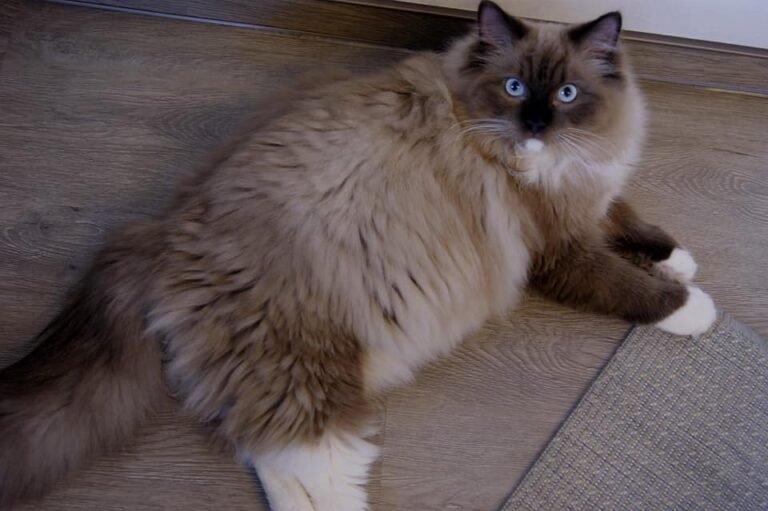
Training and tips
Mink cats are intelligent and social animals, and with proper training, they can learn a variety of behaviors and commands. Here are some tips for training your mink cat:
Start Early: It is best to start training your mink cat as early as possible, ideally when they are kittens. Kittens are more receptive to training and can learn new behaviors quickly.
Use Positive Reinforcement: Positive reinforcement is the most effective training method for cats. Reward your mink cat with treats, praise, and playtime when they exhibit the desired behavior. This encourages them to repeat the behavior in the future.
Keep Training Sessions Short: Mink cats have short attention spans and may become easily bored or distracted during training sessions. Maintain brief training sessions—5 to 10 minutes at most—and repeat them frequently throughout the day.
Use Clicker Training: Clicker training is a popular training technique that uses a clicker to mark the desired behavior. When your mink cat performs the desired behavior, click the clicker and reward them with a treat. Over time, your cat will associate the clicker sound with the reward and repeat the behavior.
Teach Basic Behaviors: Start by teaching your mink cat basic behaviors such as sitting, staying, coming, and leaving it. These behaviors are essential for safety and can help prevent destructive behavior.
Be Patient: Training your mink cat takes time and patience.Never lose patience if your cat takes some time to pick up the new behaviour.. Continue to practice and reinforce the behavior consistently.
Keep Training Positive: It is important to keep training sessions positive and enjoyable for your mink cat. Do not use punishment or forceful methods as this can cause your cat to become fearful or aggressive.
With patience and consistency, your mink cat can learn a variety of behaviors and commands. Remember to keep training sessions fun and positive, and to reward your cat with treats, praise, and playtime
Accessories
Mink cats are beautiful and unique pets that require some special accessories to keep them happy and comfortable. Here are some accessories that are recommended for mink cats:
Scratching Posts: Scratching is a natural behavior for cats, and providing a scratching post can help prevent your mink cat from scratching your furniture. A tall, sturdy scratching post that allows your cat to stretch their entire body is ideal.
Cat Beds: Mink cats love to sleep, and providing a comfortable cat bed can help them feel safe and secure. A soft, cozy bed with high sides is perfect for a mink cat, as it provides a sense of privacy and security.
Toys: Mink cats are playful and curious, and providing them with toys can help keep them entertained and active. Toys such as balls, catnip toys, and interactive toys are all great options for mink cats.
Litter Boxes: Litter boxes are essential for indoor cats, including mink cats. A litter box that is large enough for your mink cat to move around in and has a low entrance is ideal. To minimize smells and to maintain good hygiene, it’s also important to keep the litter box clean.
Collars and ID Tags: Collars and ID tags are important for outdoor cats, as they can help identify your mink cat if they get lost. Make sure the collar fits properly and has an ID tag with your contact information.
Grooming Tools: Mink cats have short, dense fur that requires regular grooming. A soft-bristled brush or comb is ideal for grooming your mink cat’s fur, and a nail clipper can help keep their nails trimmed.
Cat Trees: Mink cats love to climb and explore, and providing them with a cat tree or multi-level cat condo can give them plenty of opportunities to satisfy their natural instincts.
These are some of the accessories that can help keep your mink cat happy and healthy. When choosing accessories, it is important to keep in mind your mink cat’s size and preferences, as well as your own living space and lifestyle.
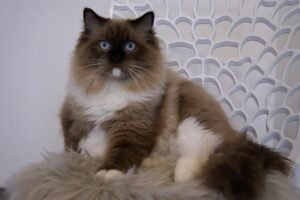

FAQ
Mink cats color ?
Mink cats come in a variety of colors and patterns. The mink color is a specific color variation of the Siamese cat breed, which is characterized by its darker, more richly colored points (ears, face, legs, and tail) and a lighter, cream-colored body. Here are some common colors and patterns that you might see in a mink cat:
- Seal Point
- Blue Point
- Lilac Point
- Chocolate Point
- Red Point
- Tabby Pattern
- Tortoiseshell Pattern
Mink Cats Food ?
Mink cats have unique nutritional needs, and it is important to provide them with a high-quality, balanced diet that meets their requirements for protein, fat, and other essential nutrients. When it comes to feeding your mink cat, there are a few key things to keep in mind. choose a high-quality cat food that is made from real meat or fish, and that does not contain fillers, by-products, or artificial preservatives. Look for cat food that lists a high-quality source of protein, such as chicken, turkey, or fish, as the first ingredient.

